During the Renaissance, Venice, as a center of art and culture, nurtured many outstanding artists, among whom Titian (Tiziano Vecelli, c. 1490-1576) was the most brilliant. Not only was he a representative of the Venetian School, but he was also one of the greatest painters of the entire Renaissance period. Titian's artistic career spanned over sixty years, with works covering various themes such as religion, mythology, and portraiture, laying a solid foundation for the development of later art.
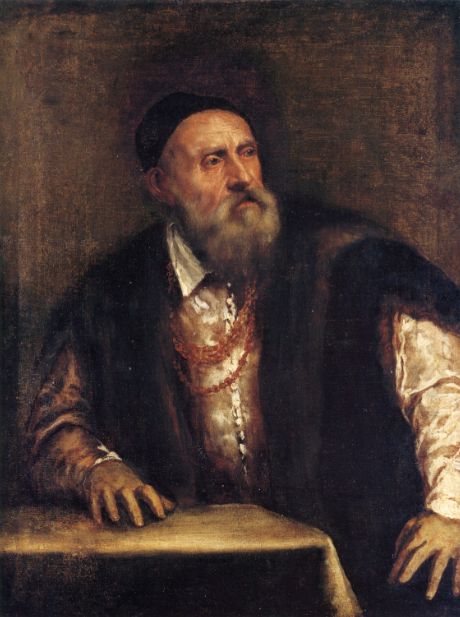
Despite a large number of private patrons, Venetian artists still relied on government commissions for fame and fortune. Titian's first opportunity to showcase his full artistic capabilities came when he was commissioned to paint the high altar of the Church of Santa Maria dei Frari. This monumental painting, "The Assumption of the Virgin," was not only the largest altarpiece in Venetian history but also broke traditional limitations with its unique composition and use of color.
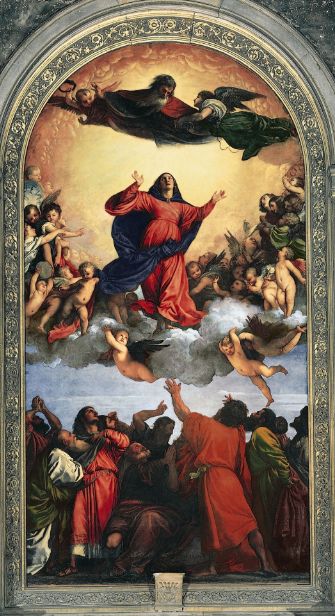
Before "The Assumption of the Virgin," Venetian altarpieces typically positioned the viewing point at the altar steps, with life-sized or smaller figures usually set in fictitious architectural extensions of the church. Titian's painting featured larger-than-life figures meant to capture the attention of anyone entering the nave's west door, a distance of nearly one hundred yards. The vertical momentum of the figures aligned with the Gothic architecture of the church, yet the grand scale, vibrant colors, and robust overall impression conveyed a successful Renaissance message. Titian uncompromisingly departed from Venetian tradition, reportedly startling the friars who first saw the painting, likely due to his awareness of contemporary Tuscan art developments, particularly Fra Bartolommeo’s works on similar themes.
In depicting the Virgin, Titian employed a typical Florentine contrapposto, while his painting style belonged to Giorgione, but on a grander scale. He outlined the forms with bold brushstrokes, making color as significant as form in constructing the composition. From the two prominent apostles upward to the Virgin's robe and the Father, a vast red triangle was formed. "The Assumption of the Virgin" established Titian’s reputation as the foremost painter in Venice, unmatched even beyond the city. Indeed, he might have been the greatest of all Renaissance painters.
Titian lacked Leonardo da Vinci's scientific interests or Michelangelo's religious and poetic fervor. Unlike Raphael, he was not also an architect. However, Titian is considered the true pioneer of modern painting because he made oil on canvas the primary medium for future Western art. He explored the full potential of oil painting, using dynamic brushstrokes to bring vitality to the rough texture of the canvas and contrasting richly thick areas with finely modulated dark tones.
Despite "The Assumption of the Virgin" being an early significant altarpiece, Titian's focus gradually shifted to secular commissions, especially after his portrait of Emperor Charles V in 1532 or 1533 (Madrid, Prado). Ten years later, he was commissioned to paint a portrait of Pope Paul III. The relaxed three-quarter length and side view composition, invented by Raphael, was now developed by Titian into a more painterly personal style, bringing everything into the color composition. The facial skin tones were emphasized against the surrounding low-intensity hues. Using only tonal gradations and varied brushstrokes, he managed to handle form and texture with astonishing skill. Likewise, he conveyed an authoritative impression purely through visual means. The seated figure, with elongated fingers and a shrewd, lean face, cast a sharp gaze at the viewer.
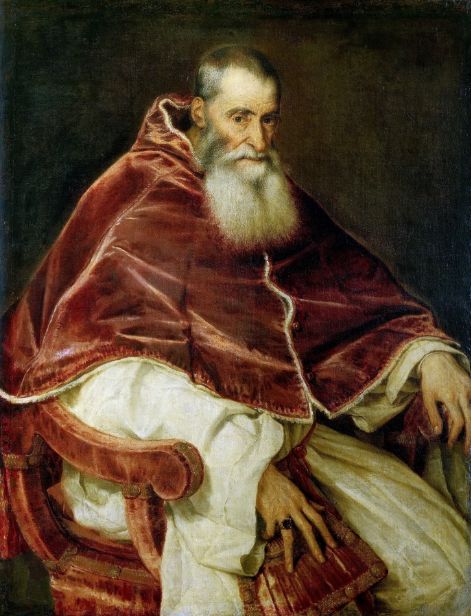
Paul III tried to lure Titian to Rome, and Charles V offered to make him a member of the royal family and grant him noble privileges, but Titian declined. Though not detached from worldly affairs, he refused all flattery, preferring personal independence. With the help of his talented, urbane, and critical friend Pietro Aretino (1492-1556), Titian became the most sought-after painter in Europe. This unique position allowed him to work for whom he wished, choosing his subjects at his own pace. No artist before had such freedom, highlighting the stark contrast with Michelangelo’s often obstructed career.
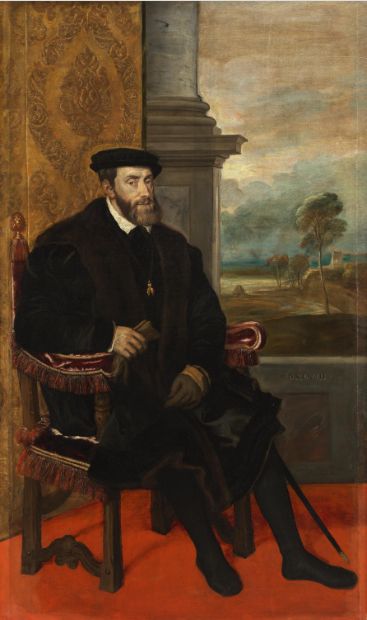
Titian's "Venus of Urbino" features a life-sized reclining nude, long identified as Venus, although the figure lacks any divine attributes. Borrowing the pose from Giorgione's simpler "Sleeping Venus," he made slight alterations, presenting the figure awake with a clearly inviting gaze. He moved her from a field into a bedroom, reclining on rumpled sheets with a small dog curled at her feet. In the background, two attendants inspect the contents of a bridal chest, suggesting an allegory of marital love. However, the painting's owner, Guidobaldo della Rovere, simply referred to it as "the nude," without speculating on any deeper meaning. The figure revels in the warmth of physical sensation, elevating sensual experience to the level of great poetry, celebrating the scene.
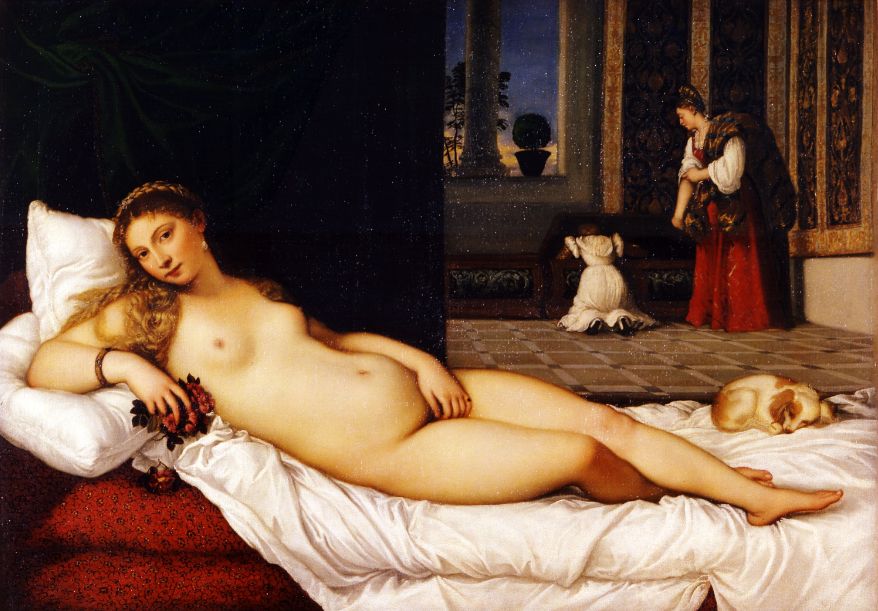
In his "poesie" series and erotic mythological scenes for Philip II of Spain, Titian's attitude toward the themes became clearer. In a 1554 letter, he wrote: "The Danaë I sent to His Majesty should be viewed entirely from the front, so I selected other 'poesie' to vary this, showing another side to make the room where they hang look more harmonious. I hope to send you 'The Poetry of Perseus and Andromeda' soon, which will have a different viewing angle." Clearly, although he personally selected themes from Ovid's "Metamorphoses," seemingly reading a popular Italian version, the subjects themselves were not his primary concern. His aim was not to illustrate the text or add different interpretations but to create an autonomous artwork.
By the time he painted "The Rape of Europa," Titian's distinctive handling of painting had reached its peak. His vigorous brushwork created a bold melody evoking the most luxurious and vibrant color effects. In his earlier works, there was “a confident technique and incredible diligence, visible from both near and far,” noted Vasari. These later works were completed with bold brushstrokes and spots of color, seemingly chaotic up close yet masterful from a distance. Another contemporary described his unorthodox method: “He rubbed the highlighted parts with his fingers to soften them, blending middle tones to reduce contrasts and harmonize the colors; other times, he would emphasize a corner with a dark touch, almost like a drop of blood, to enliven some delicate detail.” This approach was not just a new technique but a result of a new painting attitude. Titian established the independence of painting, giving it equal standing with the real world rather than just a reproduction.
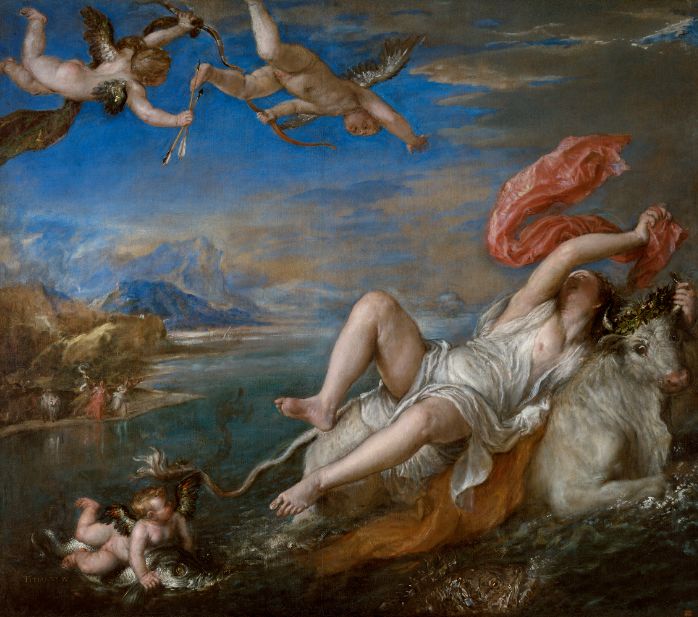
Titian's artistic achievements were not only in his paintings but also in his exploration and innovation of oil painting techniques. With vibrant brushstrokes and rich, full colors, he brought life and texture to his canvases. In works like "The Assumption of the Virgin" and "Venus of Urbino," he demonstrated his exceptional painting skills and unique artistic style, providing inspiration and reference for future artists.
As a pioneer of modern painting, Titian profoundly influenced later generations in both technique and style. Through his works, he showcased the Renaissance artists' exploration and pursuit of color, light, and composition. His paintings were not only representative achievements of the Renaissance but also significant milestones in the development of modern painting. Under Titian's brush, the religious, mythological, and secular themes of the Renaissance were imbued with new life and vitality, becoming immortal classics in the history of art.